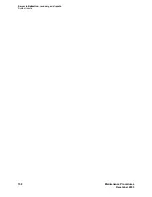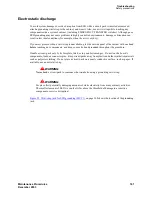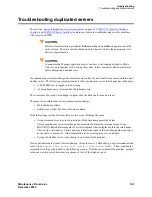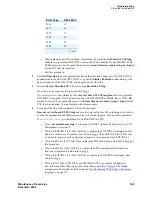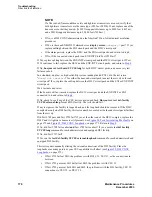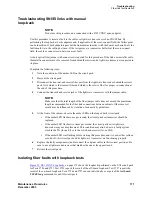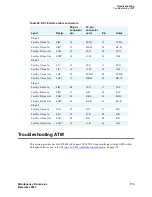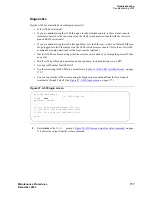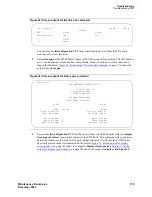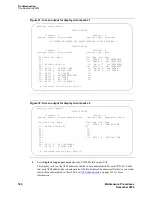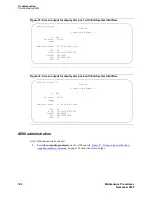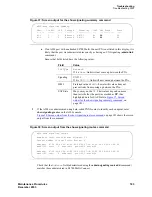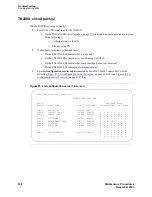
Troubleshooting
Fiber link fault isolation
Maintenance Procedures
171
December 2003
Troubleshooting SNI/EI links with manual
loop-back
NOTE:
Do not use this procedure on a connection with a DS1 CONV as an endpoint.
Use this procedure to isolate a fault in the cables or lightwave transceivers of an SNI/EI link. By
performing the loopback at both endpoints and, if applicable, at the cross-connect field, the failure point
can be identified. If both endpoints pass but the link remains inactive (with the boards not busied out), the
fault should lie in the cabling between. If the test passes at a transceiver but fails at the cross-connect
field, the cable or connectors in between are at fault.
A short optical fiber jumper with connectors is required for this procedure. If the link uses metallic cable,
the metallic connector must be removed from behind the carrier and a lightwave transceiver connected in
its place.
Complete the following steps:
1
Note the condition of the amber LED on the circuit pack.
2
Busyout the circuit pack.
3
Disconnect the transmit and receive fiber pair from the lightwave transceiver behind the circuit
pack. Note which is the transmit fiber and which is the receive fiber for proper re-connection at
the end of this procedure.
4
Connect the transmit and receive jacks of the lightwave transceiver with the jumper cable.
NOTE:
Make sure that the total length of the fiber jumper cable does not exceed the maximum
length recommended for the fiber link connections between cabinets. Otherwise, test
results may be influenced by violation of connectivity guidelines.
5
At the front of the cabinet, observe the amber LED on the looped back circuit pack.
•
If the amber LED flashes once per second, the circuit pack or transceiver should be
replaced.
•
If the amber LED flashes five times per second, the circuit pack or its lightwave
transceiver may need replacement. This condition may also be due to a faulty system
clock in the PN (for an EI) or in the switch node carrier (for an SNI).
•
If the amber LED was flashing before starting this procedure, and it is now either solid on
or solid off, this circuit pack and its lightwave transceiver are functioning properly.
6
Replace the faulty component(s) and reconnect the original cables in their correct positions. Be
sure to use a lightwave transceiver that matches the one at the opposite end.
7
Release the circuit pack.
Isolating fiber faults with loopback tests
Figure 25, DS1 CONV Loopbacks,
on page 172 shows the loopbacks performed on the SNI circuit pack
for Tests #756 and #757. Test #756 reports the result of the off-board loopback; Test #757 reports the
result of the on-board loopback. Tests #756 and #757 can run individually or as part of the test board
UUCSS long command for an SNI circuit pack.
Summary of Contents for CMC1
Page 1: ...Maintenance Procedures 555 245 103 Issue 1 1 December 2003 ...
Page 14: ...Contents 14 Maintenance Procedures December 2003 ...
Page 416: ...Additional maintenance procedures IP Telephones 416 Maintenance Procedures December 2003 ...
Page 426: ...Index X 426 Maintenance Procedures December 2003 ...


